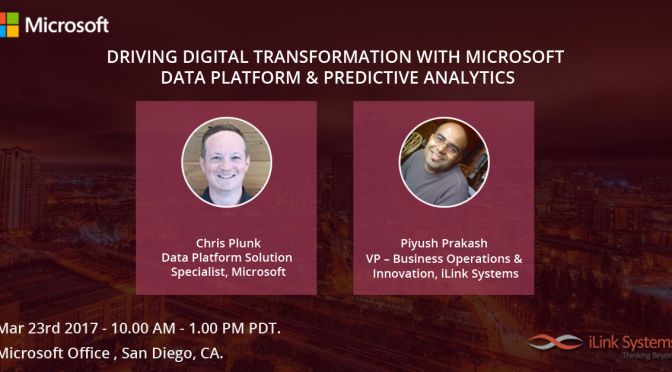
Microsoft and iLink to present a half-day event on “Driving Digital Transformation with Microsoft Data Platform & Predictive Analytics” in San Diego, CA.

Redmond, WA March 2, 2017: iLink Systems, an ISO and CMMI certified global software solutions provider, Microsoft Gold Level Partner and winner of several Microsoft “Partner of the Year” Awards, today announced an upcoming complimentary lunch event titled “Driving Digital Transformation with Microsoft Data Platform & Predictive Analytics” scheduled for Mar 23rd, 2017 in San Diego, CA. The event is co-sponsored by Microsoft and will be held at Microsoft Office, San Diego, CA. One can register at https://www.ilink-systems.com/insights/ilink-events/driving-digital-transformation-microsoft-data-platform-predictive-analytics-san-diego-ca/
Arun Kumar
PR Contact, iLink Systems, Inc.
Ph: 425-869-8104
E-mail: PR@ilink-systems.com


